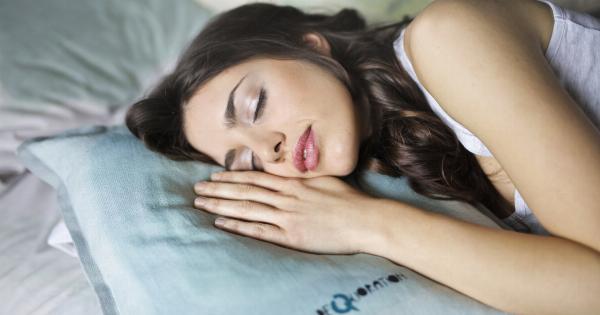Insomnia is a sleep disorder that affects millions of people worldwide. It can be characterized by difficulty falling asleep, staying asleep, or both.
This condition can have a significant impact on an individual’s well-being, productivity, and overall quality of life. While there are various treatment options available for insomnia, exercise has been proven to be an effective natural remedy.
In this article, we will explore how exercise can help beat insomnia and provide you with valuable tips on getting a good night’s sleep.
The Link Between Exercise and Sleep
Regular exercise has been shown to have numerous benefits for sleep. Physical activity can regulate the body’s internal clock, also known as the circadian rhythm, which plays a crucial role in helping us fall asleep and wake up at the right times.
Additionally, exercise can decrease symptoms of stress, anxiety, and depression, all of which can contribute to sleep disturbances.
Types of Exercise that Aid Sleep
Various forms of exercise can promote better sleep. Here are some examples:.
Aerobic Exercises
Aerobic exercises, such as jogging, swimming, or cycling, increase the body’s core temperature during the activity and lead to a subsequent drop in temperature post-exercise. This drop in temperature signals the body that it’s time to sleep.
Aerobic exercises also release endorphins, which are natural mood-boosting chemicals that can reduce stress and anxiety, thus promoting better sleep quality.
Strength Training
Strength training exercises, such as lifting weights or using resistance bands, can improve sleep quality by increasing the amount of deep sleep obtained each night.
Deep sleep is the most physically restorative sleep stage, helping to repair and rejuvenate the body. By engaging in strength training, you can enhance your body’s natural ability to enter and sustain deep sleep periods.
Yoga and Stretching
Yoga and stretching exercises can help relax both the mind and body, making it easier to fall asleep. These activities focus on controlled breathing, gentle movements, and flexibility, which can lower stress levels and promote a state of calmness.
Incorporating yoga or stretching into your bedtime routine can signal to your body that it’s time to unwind and prepare for sleep.
Timing Your Exercise for Optimal Sleep
The timing of exercise plays a crucial role in its effect on sleep. While regular physical activity is recommended for overall health, it’s important to note that exercising too close to bedtime may actually hinder sleep.
This is due to the energizing effect of exercise on the body, as well as the increase in body temperature that can make it difficult to fall asleep. It is generally recommended to finish moderate to vigorous exercise at least three hours before bedtime.
Tips for Incorporating Exercise into Your Routine
If you’re looking to improve your sleep through exercise, consider the following tips:.
Start Slowly
If you’re new to exercise or have been inactive for some time, it’s important to start slowly and gradually increase the intensity and duration of your workouts.
This will help prevent injuries and make exercise more enjoyable, increasing your chances of sticking to a regular routine.
Find Activities You Enjoy
Engaging in physical activities that you enjoy is key to maintaining an exercise routine.
Whether it’s dancing, hiking, or playing a sport, finding activities that bring you joy will make you more motivated to participate consistently, leading to better sleep in the long run.
Be Consistent
Consistency is essential when it comes to reaping the benefits of exercise for sleep.
Aim for at least 150 minutes of moderate-intensity aerobic exercise or 75 minutes of vigorous-intensity exercise every week, along with two or more days of strength training activities. Regularity will help regulate your sleep patterns and improve sleep quality.
Create a Bedtime Routine
Establishing a bedtime routine can signal to your body that it’s time to wind down and prepare for sleep.
Include activities such as light stretching, reading a book, or practicing relaxation techniques like deep breathing to help calm your mind and prepare for a restful night’s sleep.
Avoid Overexertion
While exercise is beneficial for sleep, overexertion can have the opposite effect. Pushing your body to its limits and engaging in excessive exercise can lead to physical fatigue, making it difficult to fall asleep.
Listen to your body and give yourself enough time to rest and recover between workouts.
Other Healthy Sleep Habits
In addition to exercise, adopting other healthy sleep habits can further improve sleep quality:.
Maintain a Consistent Sleep Schedule
Going to bed and waking up at the same time every day, even on weekends, helps regulate your body’s internal clock. Aim for seven to eight hours of sleep each night to ensure you’re well-rested and ready for the day.
Create a Sleep-Friendly Environment
Make sure your bedroom is quiet, dark, and at a comfortable temperature. Invest in a supportive mattress and pillows, and consider using blackout curtains, earplugs, or a white noise machine to optimize your sleep environment.
Avoid Stimulants Before Bed
Avoid consuming caffeine, nicotine, and alcohol close to bedtime, as they can interfere with your sleep. Instead, opt for relaxing herbal teas or warm milk to promote relaxation.
Wind Down Before Bedtime
Establish a relaxing routine before bed that helps transition your mind and body into a state of rest. This can include reading a book, taking a warm bath, or practicing relaxation exercises such as meditation or gentle yoga stretches.
Conclusion
Exercise is a powerful tool for improving sleep and overcoming insomnia. By incorporating regular physical activity into your routine and adopting healthy sleep habits, you can experience the many benefits of a good night’s sleep.
Remember to start slowly, choose activities you enjoy, and be consistent in your efforts. With time, dedication, and a balanced approach, you can beat insomnia and enjoy restful nights of rejuvenating sleep.































